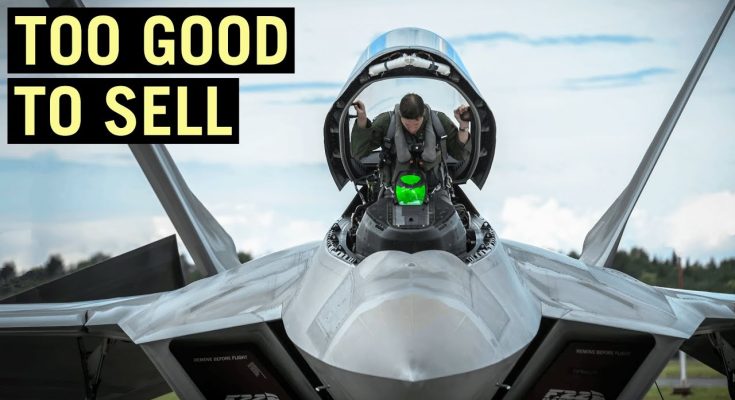The Stealth Fighter That America Never Exported
The F-117 Nighthawk is often remembered as America’s first operational stealth fighter, and it holds a unique place in aviation history. What sets the F-117 apart, however, is that it was never offered for export. While the United States has shared numerous advanced aircraft with its allies over the years, the F-117, often called the “Wobble Wing” for its distinctive design, was one of the rare exceptions, remaining a highly classified asset used exclusively by the U.S. Air Force.
A New Era in Stealth Technology
The F-117 Nighthawk was designed in the 1970s as a stealthy precision strike aircraft capable of evading radar detection. Conceived as part of the Have Blue program (which later evolved into the F-117), its design was influenced by the cutting-edge work of engineers seeking to exploit radar-absorbing materials and geometric shapes that would minimize the radar return of the aircraft.
The aircraft’s angular design, large flat surfaces, and distinctive “faceted” appearance were specifically engineered to absorb and deflect radar signals, allowing it to operate in heavily defended airspace. This stealth technology was revolutionary at the time, and the F-117 became a symbol of the U.S. Air Force’s commitment to advancing military aviation technology.
Despite its groundbreaking design, the F-117 was not a traditional fighter jet. Unlike conventional aircraft, its design compromised on maneuverability and speed, instead prioritizing stealth and precision strike capabilities. Its mission: penetrating enemy air defenses and delivering precision-guided bombs on high-value targets.
A Combat-Ready Secret
The F-117 made its first operational appearance in the 1989 Panama invasion and was soon deployed in combat during Operation Desert Storm in 1991. Its ability to strike high-value targets without being detected by enemy radar was revolutionary. The F-117’s operational success in the Gulf War was a game-changer, highlighting the effectiveness of stealth technology in modern warfare.
Despite the F-117’s success, it remained shrouded in secrecy for many years. Its design was so unconventional and its capabilities so advanced that the U.S. government chose to keep the aircraft exclusively within U.S. forces. Unlike other high-tech U.S. military aircraft, such as the F-16 Fighting Falcon or F-15 Eagle, which were offered to allies, the F-117 was never sold to foreign countries. This decision made sense for several reasons, primarily its stealth capabilities and its strategic significance in U.S. defense strategy.
Why America Never Exported the F-117
There were several key reasons why the U.S. chose to keep the F-117 in its arsenal and never exported it:
-
Stealth Technology: The F-117’s stealth features represented a leap in radar-evading design. Allowing foreign nations to acquire this technology would have compromised its tactical advantage and could have led to adversaries developing countermeasures.
-
Operational Secrecy: The F-117’s missions were highly classified, involving sensitive operations that the U.S. government did not want to risk sharing with other nations, even close allies. The aircraft’s ability to penetrate enemy airspace undetected was a significant strategic asset.
-
Strategic Control: The F-117’s role in the U.S. Air Force was pivotal in air dominance operations and precision strikes. Keeping it within U.S. control ensured its effectiveness and reduced the risk of it falling into the hands of potential adversaries.
End of an Era: Retirement and Legacy
The F-117 Nighthawk was retired from service in 2008, as newer aircraft like the F-22 Raptor and F-35 Lightning II took over the role of stealth air superiority and multirole capabilities. However, the F-117’s legacy lives on as a testament to the power of stealth technology and its impact on modern military aviation.
Although never exported, the F-117 remains a symbol of American technological superiority and serves as a reminder of the U.S. Air Force’s pioneering work in the field of stealth.



